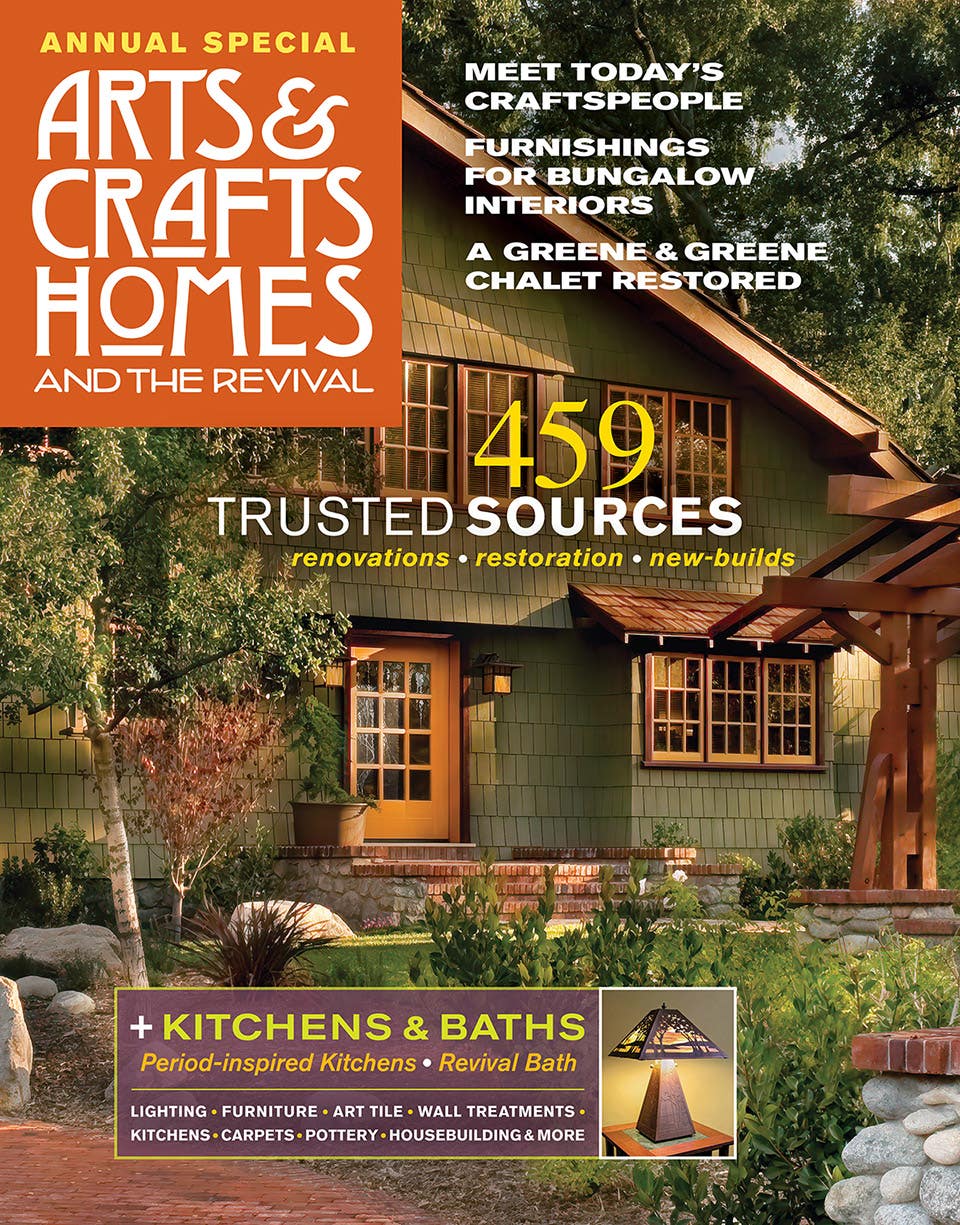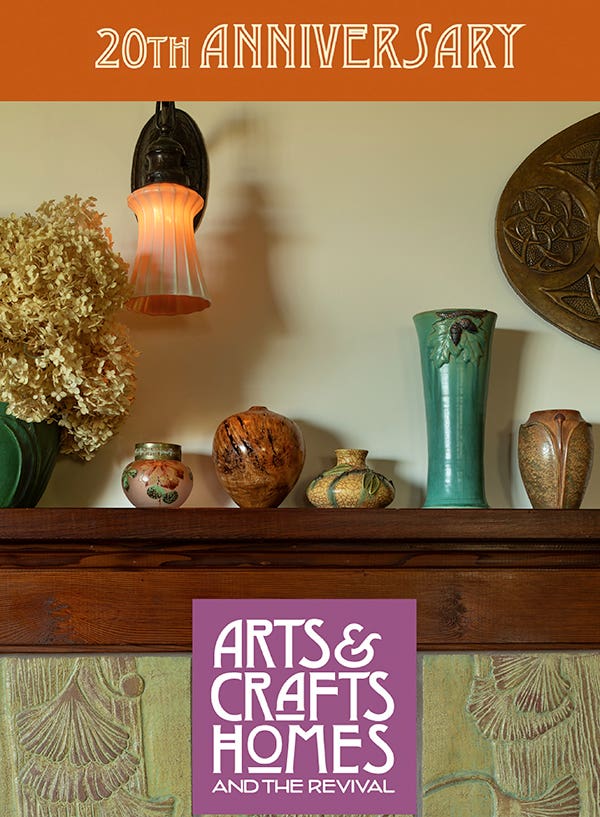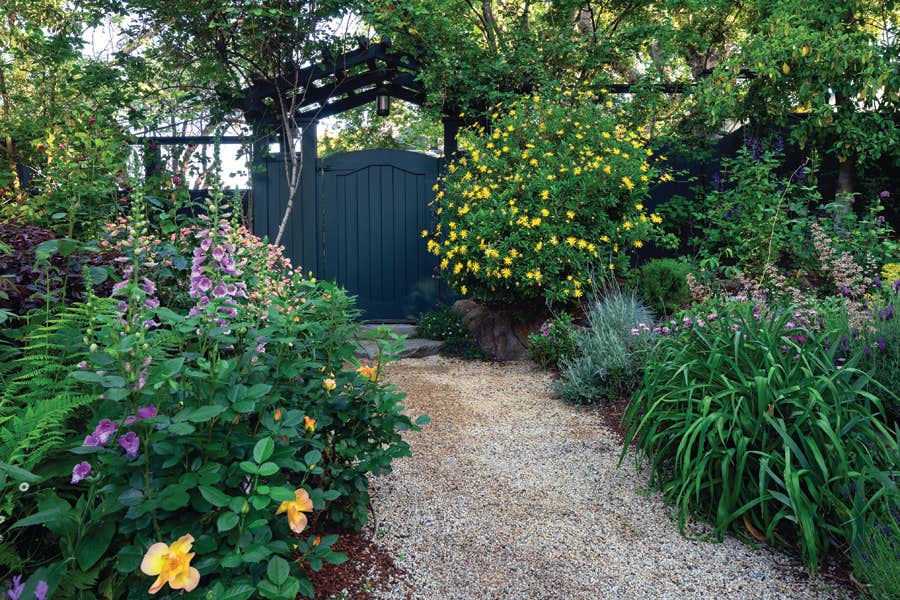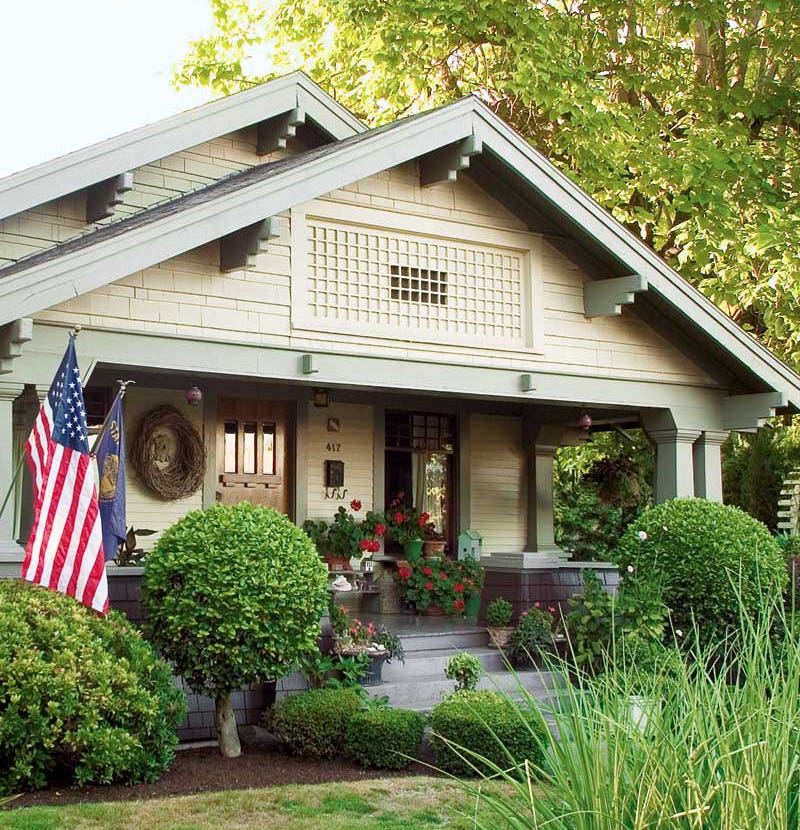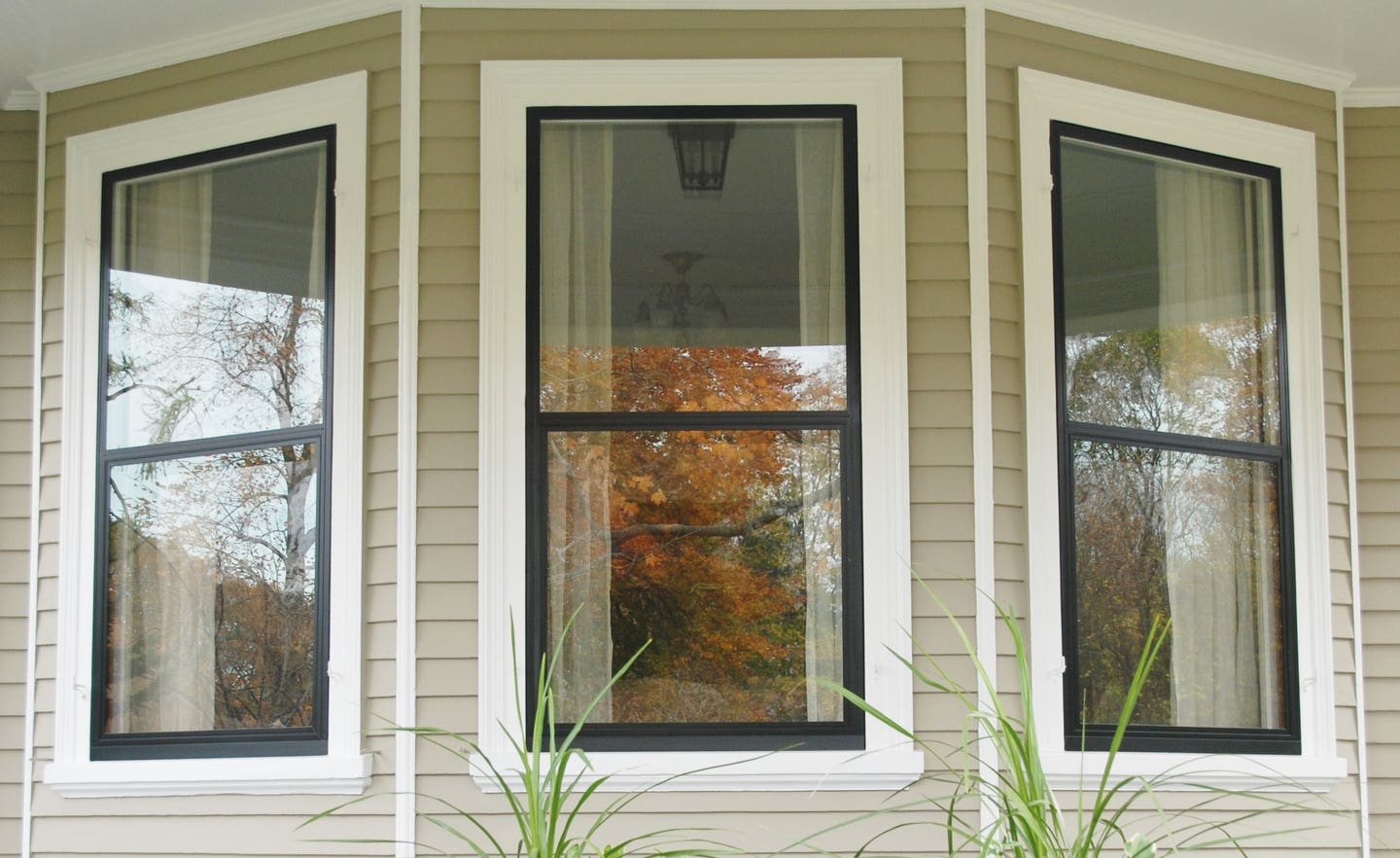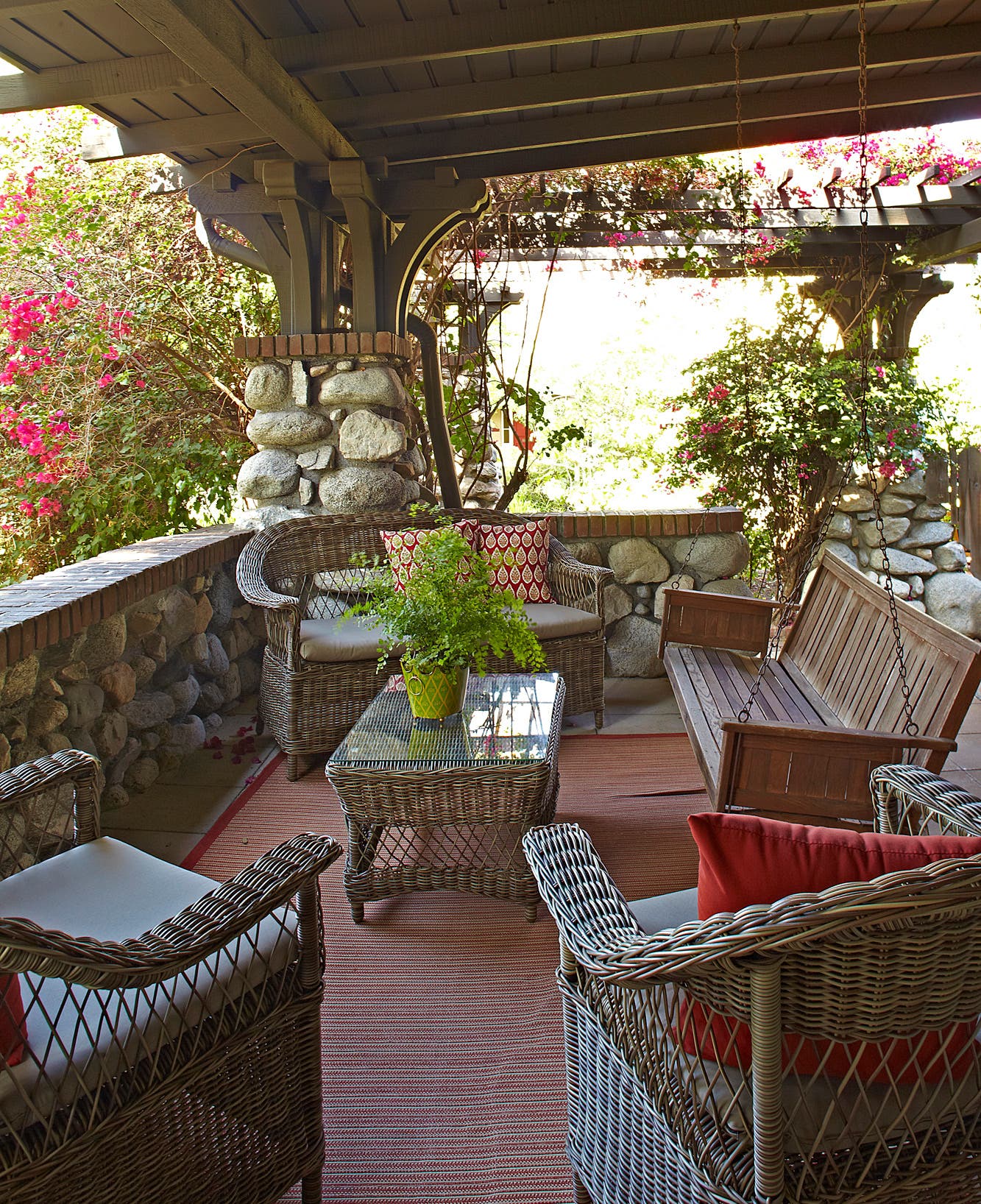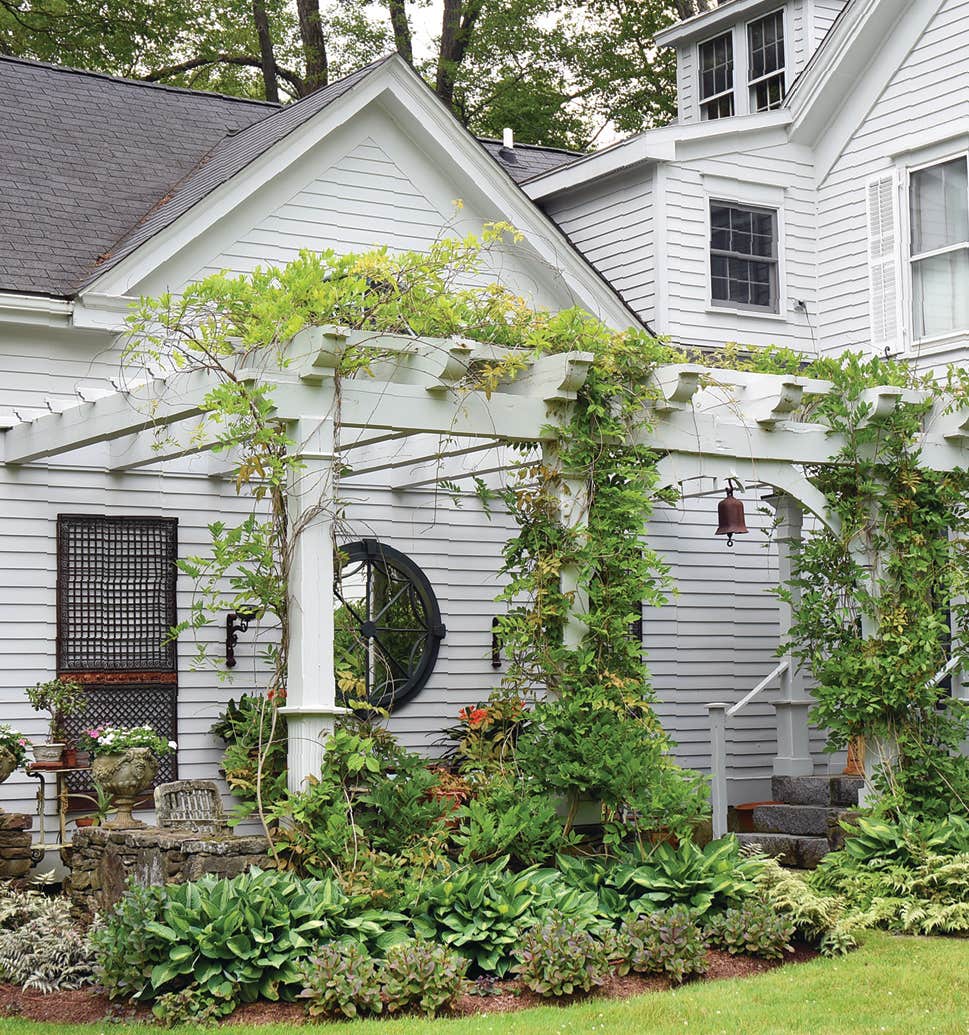Arts & Crafts-Era Shutters
During the Arts & Crafts period, storybook and classic shutters were used on some bungalows, and were standard on cottages, too.
Shutters and exterior blinds are often associated with earlier periods; they’re prevalent on Cape Cods and Greek Revivals and romantic Victorian homes. During the Arts & Crafts period, shutters were used on some bungalow variants. They were standard, too, on the cottage and revival homes of the same period, especially Dutch Colonials and Storybook houses. If you are going to use them, keep these tips in mind.
Tips for Buying and Hanging Shutters
1. One of the worst historical inaccuracies is the manner in which window shutters are hung. Classic shutters were originally intended to be a weather barrier and ventilation device. Therefore, they are designed to “swing” like a door and close up tightly inside the window casing or frame. Shutters are hung on the inside, repeat, inside of the window casing (next to the sash). This is probably the most common mistake homeowners make. And do not lag-bolt your shutters to the clapboards. Whether you will actually ever close them is unimportant; they should look like they’re ready to go.
2. Shutters should be the same shape as the window sash that they are covering. The countryside is littered with round-head windows paired with rectangular shutters, and sashes framed with disproportionally wide or narrow shutters.
3. Authentic shutters were made of wood, preferably rot-proof red cedar or mahogany. (These should also be constructed with mortise and tenon joints, and pegged.) Today, some high-quality, operable, period-look shutters are made of composite materials that are moisture, rot, and termite resistant. Others incorporate weather-impervious, marine-grade fiberglass.
4. When measuring a window opening for shutters, take care to determine whether the opening is still truly square (it probably isn’t), the depth of the reveal, which is the thickness of the channel allotted for the shutter, and appropriate amount of clearance needed to permit the opening and closing. The shutter manufacturers are more than happy to assist the homeowner with all this preparation for ordering.
5. If you’ve chosen classic shutters with louvers, make sure the louvers face down and towards the house when they’re in the open position. That way, should you ever need to close them, the louvers will direct rainwater away from the window, rather than against it—a real consideration if anyone in your household tends to leave windows open during a thunderstorm!
Types of Shutters
While the most common kind of exterior shutter is the fixed louver (immobile horizontal slats), there are several other forms including:
Movable Louvers, equipped with a slender post that allows the occupant to adjust the angle of the louvers for light, privacy and ventilation.
Paneled shutters, which have solid beveled or flat planks that are occasionally embellished with cut-out patterns such as diamonds, fleurs de lys, animals, sailboats, acorns or pine trees, etc.
Board and Batten Shutters, which are long vertical strips with or without gaps between them and then secured with cross-members. A variation of this is Tongue and Groove Shutters, which have the interlocking planks similar to bead-board.
The Bermuda Shutter is another configuration: a single, full-width, louvered panel that is hinged from the top and swings out at the bottom, like older wooden storm windows.
A Word on Hardware:
Hinges, pintels, and shutter dogs: the hardware that fixes your new shutters in place should be just as authentic as the shutters themselves. Strong hinges and flexible pintels (or hinge pins) look right and permit the shutter to operate in a functional and historically correct manner. Hinges should be affixed to the correct side of the shutter and casing, or they will break the glass when you close them. They are designed to allow you to lift the shutter off the pintel without the use of tools.
Shutter dogs may appear decorative at first glance, but without them, the shutter will bang against the house. Another method of holding the shutters in place is a sill-hook, often used in buildings with masonry facades. These attach to the window sill and are concealed behind the shutter.
Shutter Sources
Shuttercraft Hard-to-find, real wood traditional bi-fold movable louvers in any size. Hinge café style, full height, or in double rows. Plantation louvers, colonial panels, and more in hardwoods, unfinished or fully painted. Made in USA, shipped nationwide.
Atlantic Premium Shutters Shutters designed to deliver enduring beauty and charm, offering historical authenticity and meticulous detail.
Aeratis Custom, historically accurate PVC shutters available for a fraction of the cost of wood shutters. Hardware included.
Vixen Hill Custom cedar shutters outlast composites. Discover why as you design and price online. Buy in the color you desire with the hardware you need.
Adorned Openings Composite wood exterior shutters customized in styles including panel, louver, board and batten, and combination.
Custom Shutter Company Manufacturer and distributor of shutters and shutter hardware, with 25 years combined experience in measuring, manufacturing and installing shutters of all types. Request a quote on their website.
Shutter Hardware Sources
Patricia Poore is Editor-in-chief of Old House Journal and Arts & Crafts Homes, as well as editorial director at Active Interest Media’s Home Group, overseeing New Old House, Traditional Building, and special-interest publications.
Poore joined Old House Journal when it was a Brooklyn-brownstoner newsletter in the late 1970s. She became owner and publisher and, except for the years 2002–2013, has been its editor. Poore founded the magazines Old-House Interiors (1995–2013) and Early Homes (2004–2017); their content is now available online and folded into Old-House Journal’s wider coverage. Poore also created GARBAGE magazine (1989–1994), the first unaffiliated environmental consumer magazine.
Poore has participated, hands-on, in several restorations, including her own homes: a 1911 brownstone in Park Slope, Brooklyn, and a 1904 Tudor–Shingle Style house in Gloucester, Massachusetts, where she brought up her boys and their wonderful dogs.

